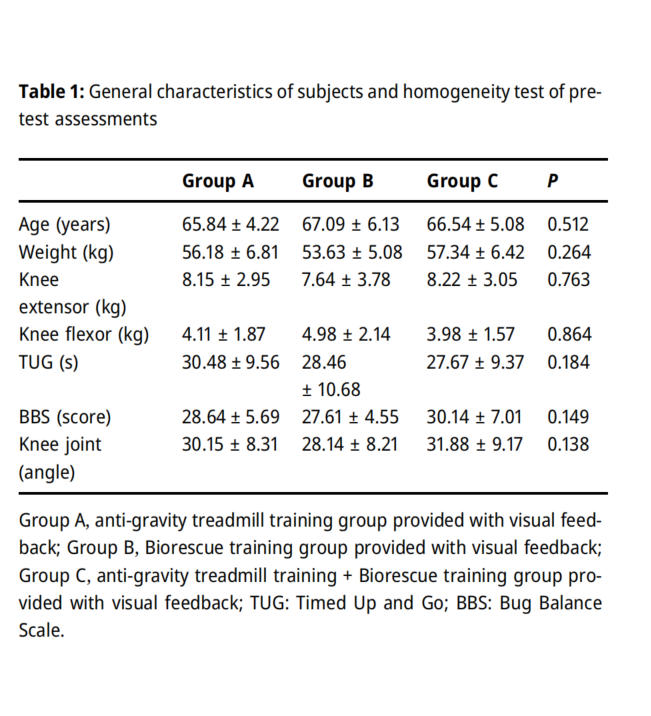This study was conducted to investigate the effects of anti-gravity treadmill training, which provides visual feedback and Biorescue training on proprioception, muscle strength, balance, and gait, in stroke patients. A total of 45 people diagnosed with post-stroke were included as study subjects; they were randomized to an anti-gravity treadmill training group provided with visual feedback (Group A), a Biorescue training group provided with visual feedback (Group B), and an anti-gravity treadmill /Biorescue group that subsequently received anti-gravity treadmill training and Biorescue training (Group C).
Article cited in:Open Med (Wars).2023Oct27;18(1):20230828.
Article link:https://pubmed.ncbi.nlm.nih.gov/37900962/
Stroke is caused either by cerebral infarction, in which a blood vessel in the brain is blocked by cerebral hemorrhage, in which blood is drained into substantial structures in the brain due to a ruptured blood vessel. Stroke symptoms include not only sensory, motor, and cognitive impairments but also decreased coordination, balance, and muscle tone control. Sensory motor disorders affect muscle strength, balance, and normal gait, which increase dependence on daily living activities; thus, long-term rehabilitation is required. As dependence on daily life increases or the rehabilitation period is extended, the burden on medical expenses increases. Therefore, much attention is currently being given to rehabilitation to achieve independent walking, which plays the most critical part in reducing dependence on daily life.

In this study, lower extremity muscle strength was evaluated by measuring the muscle strength of the knee extensor and flexor on the affected side using a manual muscle strength measuring device. In this study, the pressure at the maximum isometric contraction of each muscle was measured three times, and the average value was used for the analysis. Knee joint extension and flexion were measured in a sitting position. To measure the knee joint extensor muscle, we instructed the subject to straighten the knee with a pressure plate of the manual muscle strength measuring device placed on the front side of the ankle. To measure the knee joint flexor muscle, we instructed the subject to bend the knee with a pressure plate placed on the heel.
Furthermore, a statistically significant increase was observed in balance ability and gait speed in Group C, which received both anti-gravity treadmill training and Biorescue training, compared with the other groups. This result can be attributed to the fact that the lower extremity muscle strengthening effect of anti-gravity treadmill and the improvement of dynamic and static balance ability through Biorescue training overlapped, creating a remarkable effect.